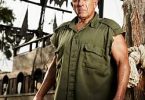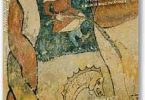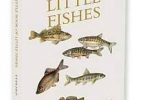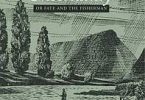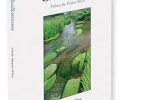Published: 1989
Author: Clive Gammon
Reviewed by: Chris Plumb
This book set me back the grand sum of 20 pence and was then in my possession for some years before I eventually got around to reading it!! Let me explain. Some 8 or so years a go I bought a dozen ‘remaindered’ books for a couple of quid. Why?, I can’t remember – I suppose there was a single title that I wanted. Amongst the others was this one. However, it stayed in my spare room unread and unloved for 2 or 3 years – my prejudice against something so cheap. It was only when an angling acquaintance of mine happened to mention that this was one of his all time favourite angling books that I dug it out to read. And what a gem of a book I un-earthed.
 In, I Know a Good Place, Clive travels to some unlikely and remote places in search of fish and his globe trotting would put Michael Palin to shame. In fact he almost goes from pole to pole in this book. With northern ventures into Lapland for Grayling and arctic Canada for Char (and also taking in Alaska and Iceland), while in the Southern Hemisphere he explores the Falkland Islands for some ridiculously easy Sea Trout fishing. This later fact made him a minor celebrity in the States during the 1982 conflict – media types could actually speak to someone who had been there – though they were curiously uninterested in the quality of the sea trout!
In, I Know a Good Place, Clive travels to some unlikely and remote places in search of fish and his globe trotting would put Michael Palin to shame. In fact he almost goes from pole to pole in this book. With northern ventures into Lapland for Grayling and arctic Canada for Char (and also taking in Alaska and Iceland), while in the Southern Hemisphere he explores the Falkland Islands for some ridiculously easy Sea Trout fishing. This later fact made him a minor celebrity in the States during the 1982 conflict – media types could actually speak to someone who had been there – though they were curiously uninterested in the quality of the sea trout!
Most angling travel books take in Mahseer and/or Bonefish and Gammon is no exception in this (he fishes for both) – he also travels to some bizarre places as well. Christmas Island for example, and a trip into deepest Amazonia in search of the legendary Arapaima. Clive Gammon, without doubt, must have inspired others to follow in his footsteps – a fact John Bailey acknowledges in his book Trout at Ten Thousand Feet.
This book could probably be better described as a travel book and a very well written one at that. But a travel book which has some great fishing in it! Clive gives equal ‘elbow room’ to his descriptions of people, places and journeys as he does to the fishing. It is a rollicking good read, a real page turner, if you start it make sure you’ve got a couple of hours at your disposal it may be that long before you look up again. Clive’s easy and descriptive style is insightful and very accessible. This is a book that will have you grabbing for an atlas and checking flight schedules!
“The high arctic northwest of Baffin Island is a land without colour. It consists mostly of grey whale-back hills rising out of a grey moraine, and the only highlights to draw the eye are the patches of snow and the occasional ice boulders, still present even in this midsummer landscape.
“Canada’s gulag,” I told myself. “First they deep froze it, then they photographed it in black and white.” I tied a suitably sombre black bladed spoon on the line and flipped it out into the flat, grey waters of Stanwell-Fletcher Lake. The spoon had travelled to within 5 yards of the rocks at my feet when this pallid scene suddenly burst into colour. Just as Dorothy’s monochromatic Kansas whirled into the Technicolor of the Land of Oz, so now the leaden, lifeless waters of the lake blossomed into an extravaganza of silver and rose pink.
“At last we meet, my beautiful Pink Lady!” crooned Nathaniel our guide. The Pink Lady is a member of that sleek, mysterious, powerful race Salvelinus Alpinus, commonly known as the Arctic char and found only in northern waters. Specifically, this lady was of the anadromous, or sea run, manifestation of the species. And while she was a shimmering beauty, the char was shy enough – and strong enough – to have sped one hundred yards away in an instant on the six pound test, heading helter-skelter for the ice still out on the lake. I found myself shaking with surprise. Not seconds ago, before the fish crashed my lure, those eight translucent feet of water that covered the dark boulders close to shore had seemed utterly empty. I estimated the char weighed around twelve pounds. That rosy flush on her sides fading to orange on the belly, was the spawning colour the fish had taken on when she entered the lake from the ocean. Yet she was no fragile beauty. As A. J. McClane, the doyen of American angling writers, says in Game Fish of North America, “This may be, quite literally, the strongest fish that swims.”
(Opening page of The Pink Lady – Arctic Canada)
I Know a Good Place; Swan Hill Press 1990. (1st published in USA 1989) ISBN 1 85310 152 4
Second hand copies will usually cost more than 20pence! Expect to pay in the region of £15.
Click here to check the best price for this book on Amazon.

